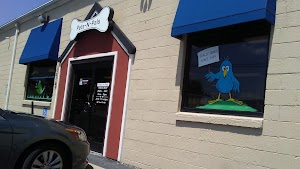Keeping Your Puppy Happy & Well Adjusted Outdoors
One of the great joys of raising a puppy is being granted the opportunity to guide their journey through life. Since a good chunk of that time will be spent outdoors, it’s your job to ensure that they get familiarized with their surroundings before they reach their adult years.
Once you’ve got a full-grown dog on your hands, you’ll want to take them to the beach, the park, and to public places without a struggle. Here are some things you can do right now to help ease your little pup into this big, crazy world.
Start Socializing Early
The first few months of social integration are pivotal. It’s not impossible to teach an old dog new tricks, but it is much easier to do while their life experiences are still fresh. From eight weeks of age and beyond, expose your pup to new people, dogs, cats, and children.
They may be a bit apprehensive at first, but encourage your puppy to welcome sniffs from other animals and strokes from other humans. Allow new people to gently handle, pick up, and touch your pet. Some puppies adore attention, they’re happy and relaxed, gladly returning the affection. Others might take a little more time to adjust.
As you’re observing, correct unwanted behaviors such as nipping or excessive barking. An adult dog that plays nicely, respects boundaries, is non-reactive, and well-balanced is the end goal.
How Much is Too Much
Those of us who have been roaming the planet for a few years have acclimated to the constant stimulation that we live with. However, we all need a break sometimes, and that includes your puppy. Ease into unfamiliar situations starting with a lower intensity and slowly take it up a few notches.
If the sound of a garbage truck or a busy road sends your pup into Fight or Flight mode, it’s probably best to stick to neighborhoods with less traffic on walks. If they feel uncertain or appear anxious around new canines, schedule a play-date instead of heading straight to the dog park.
Allow your pup to move at his or her own pace; once they dip their toes, they’ll see that the water is just fine!
Master the “Come” Command
Much like a small child, you are responsible for your dog, their behavior, and the consequences of that behavior. If they were to run up to someone today, the person might say “aw, what a cute puppy!”
However, that response could turn into “uh-oh…that’s a big dog coming my way” in just a few short months.
Teaching your pup to sit, stay, and come will prevent years of frustration going forward. Even if they’re friendly, greeting another dog that is anxious or territorial can rapidly ignite an altercation. Should you plan on taking your pup to off-leash parks, keep in mind that most policies require pets to stay within a certain range of their owner.
You know your furkid best, so it’s up to you to determine whether or not a situation is appropriate for them. Breeds with a natural inclination for chasing prey will likely have difficulty on loose-leash hikes where rodents are roaming free. On the other hand, they might fare well chasing a ball or a frisbee in a fenced-off area. Either way, it’s never too soon to start command training!




